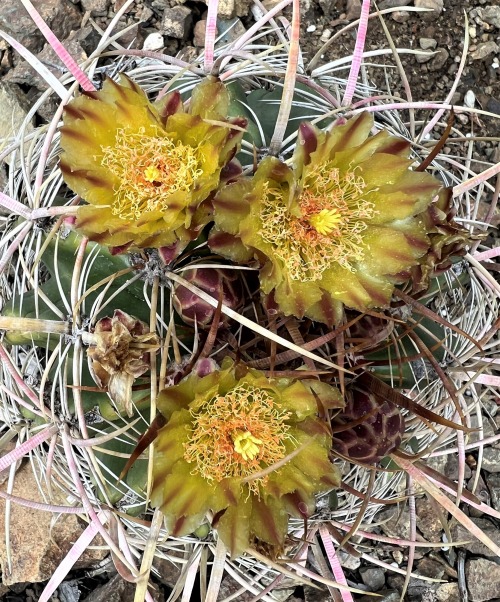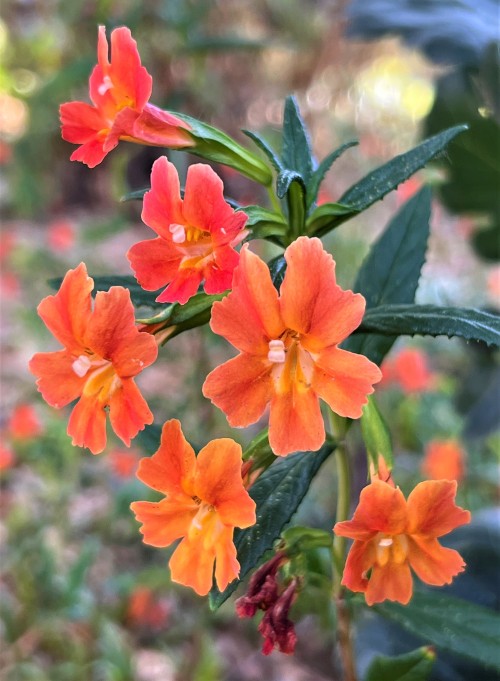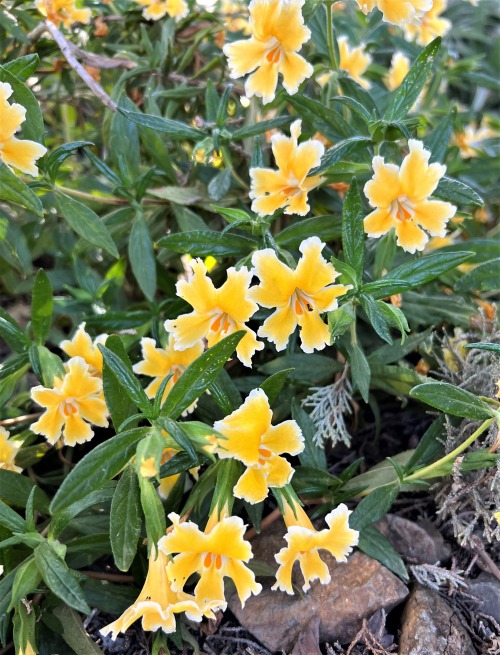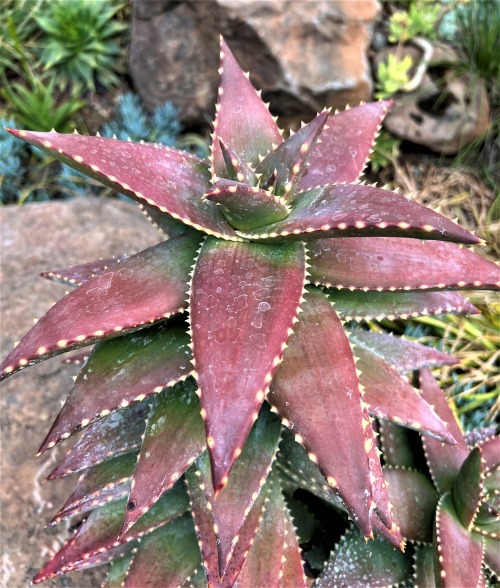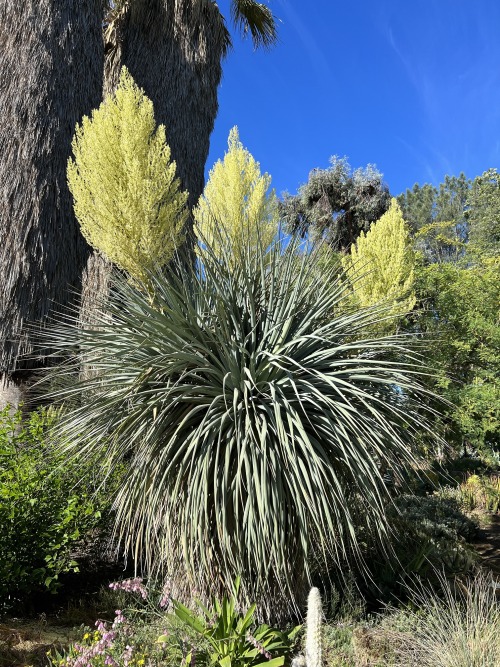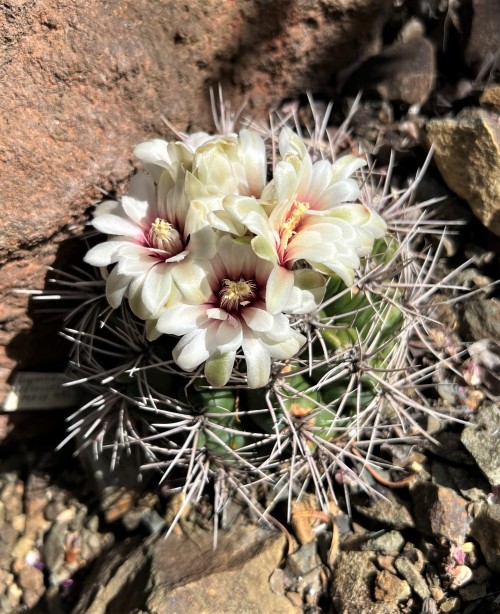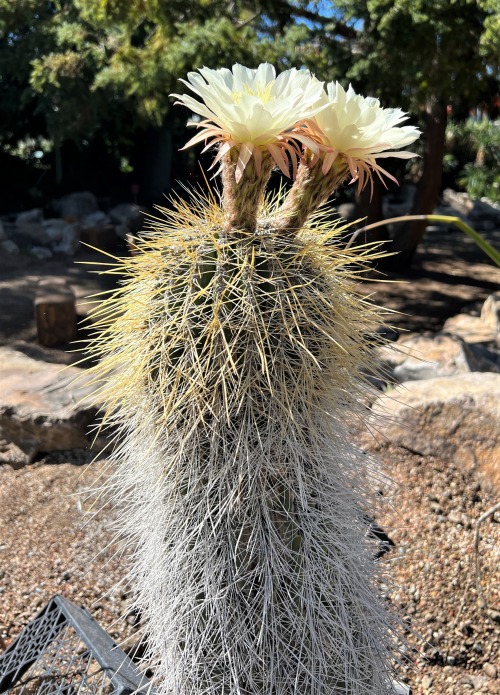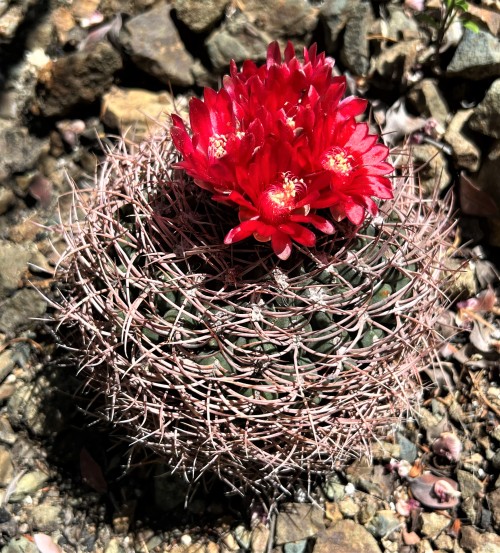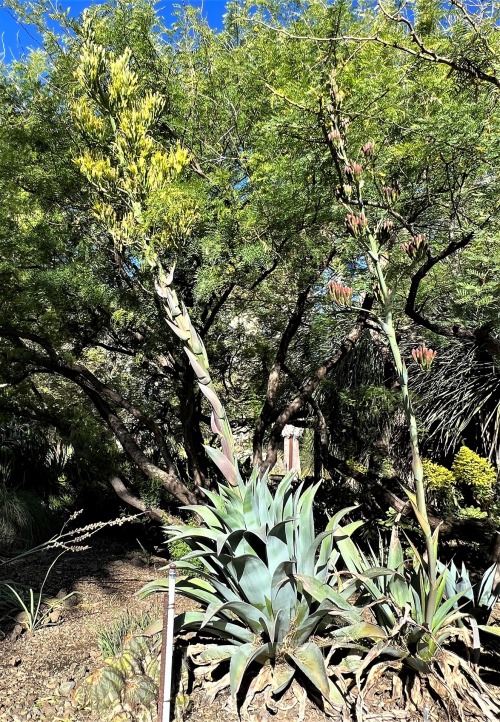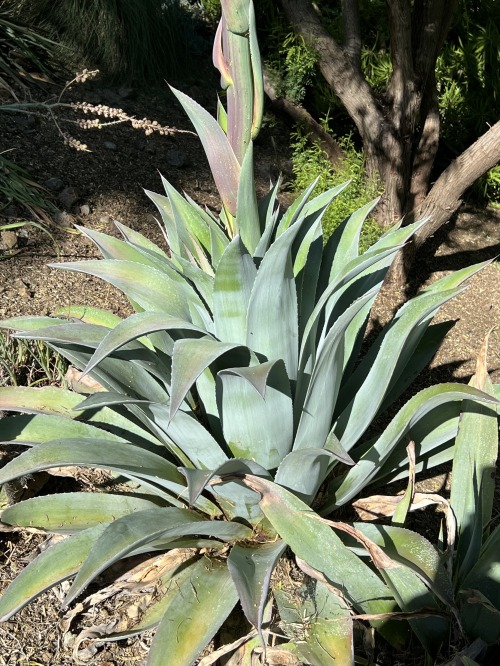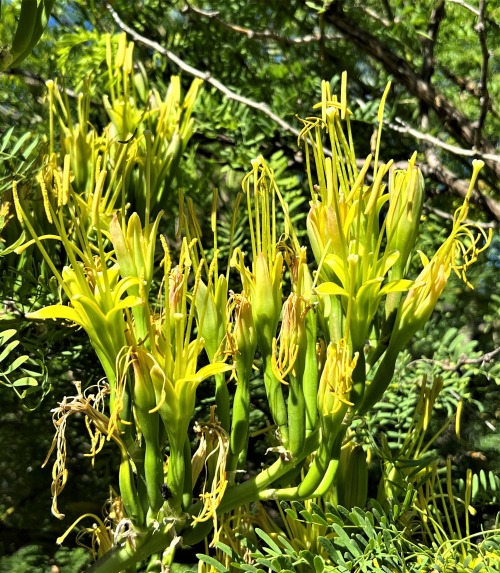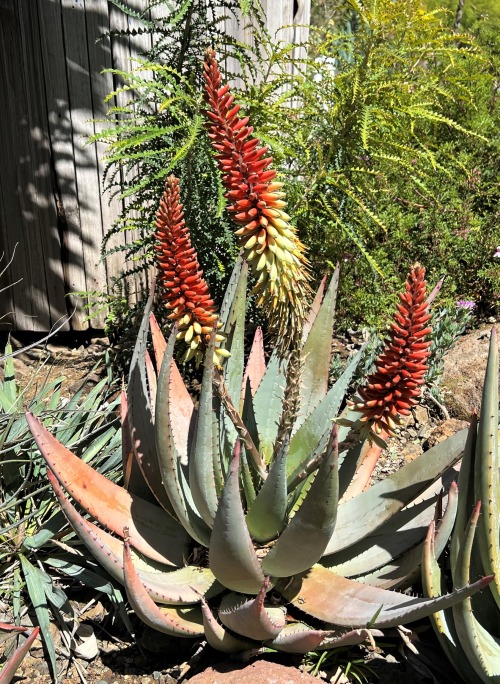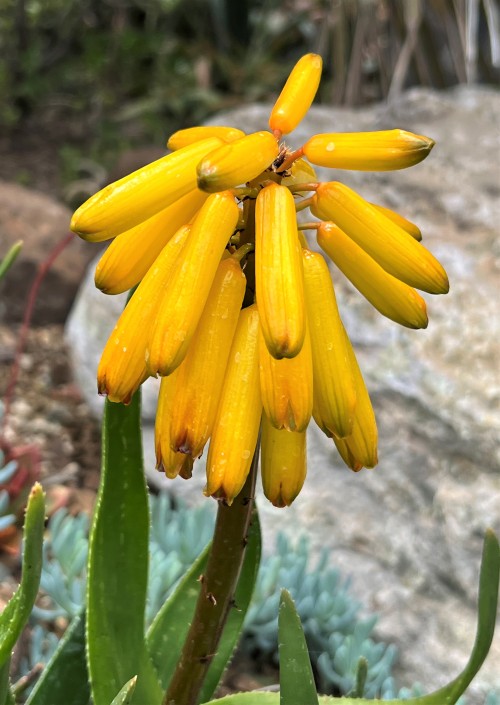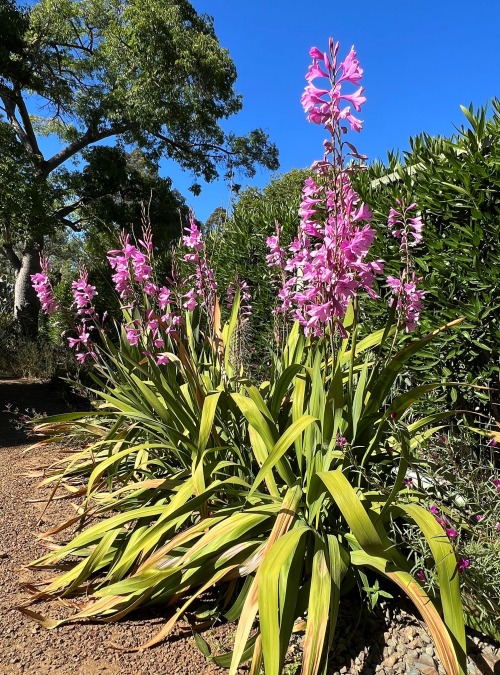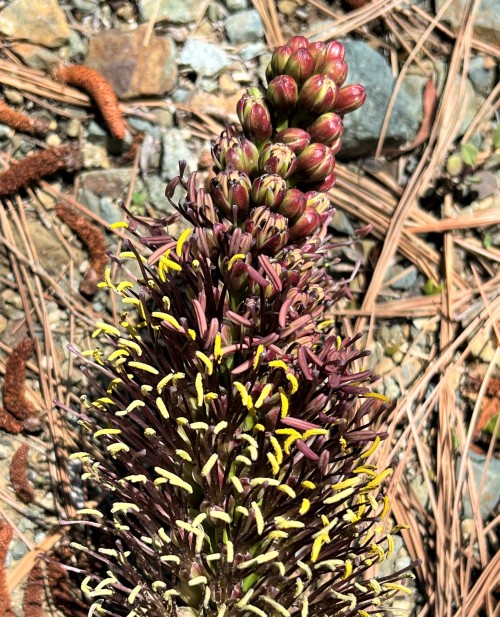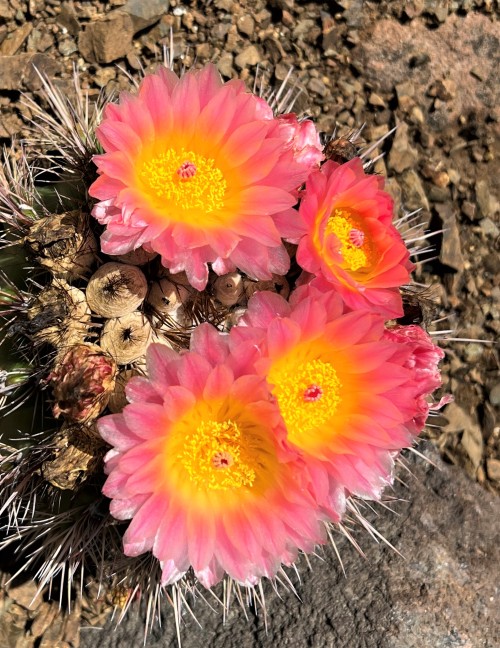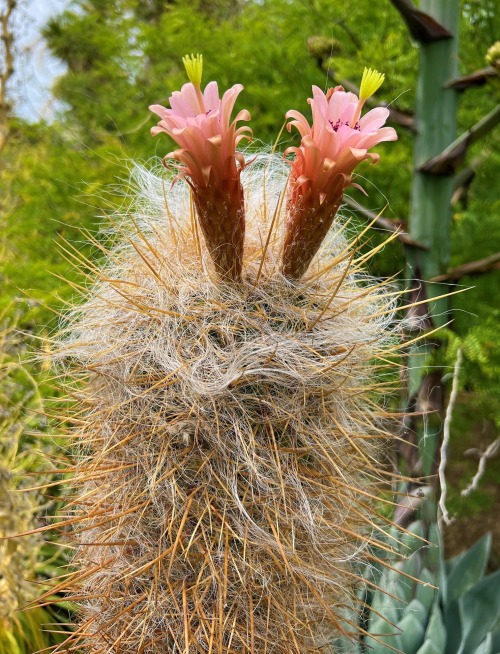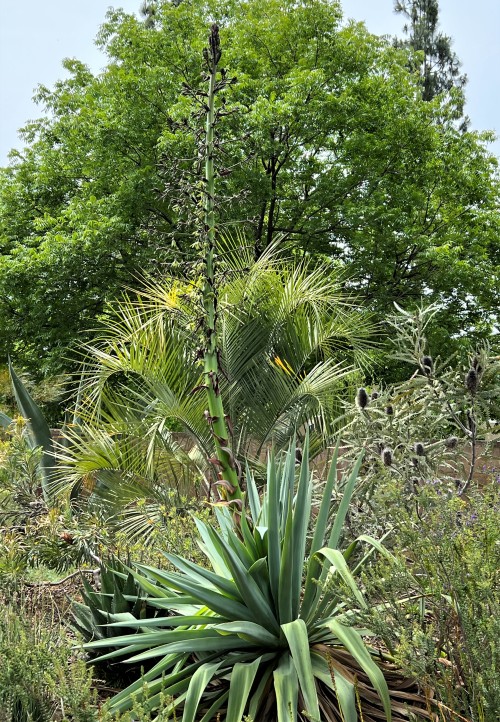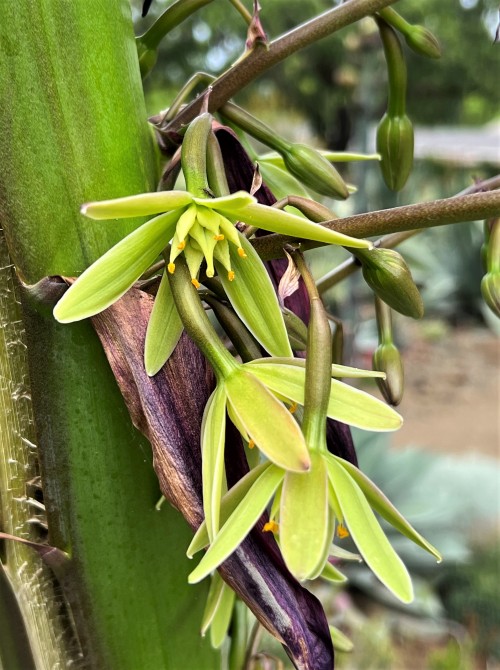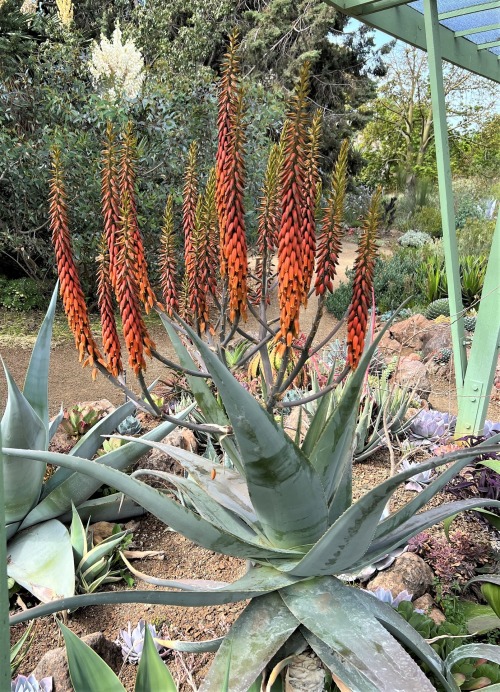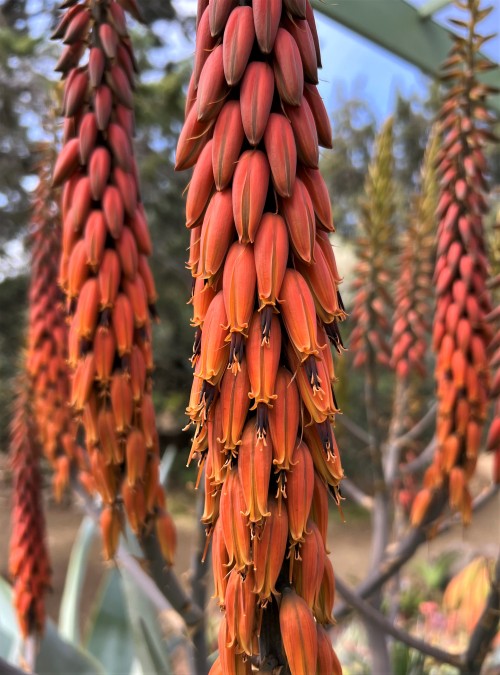#ruth bancroft garden
Opuntia microdasys
This is a common cactus in cultivation, with a charming appearance and the innocuous common name of “bunny ears”. But let the buyer beware! Though lacking large spines to stab someone, it has an abundance of tiny glochids, which may look furry and cute, but easily get embedded in skin and are a pain to remove. It is best used far enough back in a garden bed that nobody will accidentally brush against it. If precautions are taken, it is an attractive garden plant with showy yellow flowers in late spring. It is widespread in central and northern Mexico, and is closely related to Opuntia rufida, which comes from a little farther north and can be found in northern Mexico and in Texas. Some classifiers lump O. microdasys into O. rufida.
-Brian
Post link
Ferocactus viridescens
Cacti in the genus Ferocactus are often referred to as barrel cacti, and some of them are quite barrel-like in size, but Ferocactus viridescens is a smaller plant, typically less than a foot in diameter (30 cm). The name “viridescens” means “becoming green”, and this refers to the flowers, which may be yellow, yellowish-green, or yellow with a purplish midstripe, as seen in the photos above. This plant grows in the San Diego area in southern California, and also southward into northwestern Baja California. It is a rare example of a cactus restricted to winter-rainfall habitats, a trait it has in common with some cacti from central Chile.
-Brian
Post link
Diplacus puniceus
This species is found farther to the south than D. grandiflorus, mainly around the San Diego area and southward into Baja California. It is also a taller plant, with reddish-orange flowers. Like D. grandiflorus and D. aurantiacus, it is very drought-tolerant.
-Brian
Post link
Diplacus grandiflorus
This is one of the “sticky monkey flowers”, formerly placed in Mimulus, but now put in the genus Diplacus. The various species are a common sight in Mediterranean-climate parts of California, and D. grandiflorus has an odd distribution, being found in 2 separated areas: the foothills of the northern Sierra Nevada, and the Coast Ranges to the south of Monterrey Bay. It is sometimes treated as a subspecies of the widespread Diplacus aurantiacus. The flowers are truly elegant!
-Brian
Post link
Aloe pearsonii × distans
I made this hybrid many years ago, trying to capture the reddish leaves and stacking habit of A. pearsonii in a plant that is easier to grow. I am happy with the result, but it is perhaps not as easy for those who do not live in winter-rainfall climates (both A. pearsonii and the other parent, A. distans, are from western South Africa, in the winter-rainfall zone, and neither is fond of humid summers). A selection of this cross was named ‘Hellskloof Bells’ and introduced by the Huntington Gardens, but the plant pictured is an unnamed sibling. This hybrid needs plenty of sun or the reddish color will be lost.
-Brian
Post link
Nolina nelsonii
The genus Nolina is part of a group of genera that are sometimes treated as a family (Nolinaceae), but also included by some in the larger family Ruscaceae, or by others in the still larger family Asparagaceae. In the latter classification, the group is classified as the subfamily Nolinoideae. In any case, the species of Nolina and their relatives are all dioecious - that is, with separate male and female plants. This means that the pollinator must be attracted to both the male and female flowers, so that it will visit both and bring about cross-pollination. The pollinators in this case are bees, with various species avidly seeking out the flowers, which are small and creamy. Nolina nelsonii is native to the state of Tamaulipas in northeastern Mexico. It is notable for its pale blue leaves, not to mention the spectacular plumes of many thousands of tiny flowers.
-Brian
Post link
Gymnocalycium mostii (G. valnicekianum)
We received this cactus, from Cordoba Province in Argentina, under the name Gymnocalycium valnicekianum, but it has now been lumped into G. mostii. The large flowers look dirty-white when they are closed, but they are stunning when open, the pearly white of the petals fading to red at the center, with a tuft of white stamens within.
-Brian
Post link
Trichocereus bertramianus
This tall, bristly-spined cactus is part of the Trichocereus tarijensis group, native to southwestern Bolivia and across the border in northwestern Argentina. While T. tarijensis itself has a magenta-pink flower, T. bertramianus has pure white flowers. Some classifiers treat bertramianus as a subspecies of T. tarijensis, and still others treat it as a synonym under that species. For a time, all of the Trichocereus species were lumped into Echinopsis, but this drastic lumping effort has been walked back. Under any name, T. bertramianus is a striking plant.
-Brian
Post link
Echinocereus rigidissimus subsp. rubispinus
While some species of Echinocereus have wild spines and a ferocious appearance, others like E. rigidissimus have neat spines which are pressed closely against the body. This species occurs in both the United States (Arizona and New Mexico) and to the south in Mexico (Sonora and Chihuahua). The subspecies rubispinus (the “ruby-spined” cactus, also known as the rainbow cactus) is from Chihuahua, in the southeastern part of this range. Though the huge flowers do not last long, they are a breathtaking sight.
-Brian
Post link
Gymnocalycium oenanthemum
This wonderful cactus, a little bigger than a tennis ball, is native to Catamarca Province in Argentina. Its vivid red flowers are a contrast from the pink, white, or off-white colors usually seen in the genus. The name alludes to the color, since it means “wine flower”.
-Brian
Post link
Agave parrasana × Manfreda ‘Dit Dah’
There are many more Mangave plants available now than there were when I made this hybrid ten years ago. Its mother is Agave parrasana, from Coahuila in northern Mexico, and its father is a Manfreda hybrid I had done years earlier. It is very similar to its sibling ‘Blue Fountain’, whose picture I posted in Dec. 2021. What I especially like about these 2 plants is the way the leaves seem to erupt upward, rather than splaying outward as many Mangave cultivars do. Though the leaves have spots, they are subtle.
-Brian
Post link
Aloe claviflora x petricola
This very showy hybrid has the vivid bicolored flower clusters of Aloe petricola, but on a more compact plant due to the influence of Aloe claviflora. Both parent species are from South Africa, and each is a standout in its own right.
-Brian
Post link
Aloe commixta
This small aloe with a sprawling growth habit comes from Cape Peninsula (the top of the peninsula is Table Mountain and Cape Town, while the bottom is the Cape of Good Hope). This is squarely in the winter-rainfall zone, and it might be expected that plants from there would do well in California, since the climate is similar. But for some reason this aloe is very uncommon in cultivation, and we planted it out in the Ruth Bancroft Garden only last year. This is the first time it has flowered, and we are pleased to see that the flowers are bright yellow (the species ranges from yellow to red-orange). Along with its relatives such as Aloe ciliaris and Aloe striatula, this plant has been recently put into a new genus, Aloiampelos, but this classification is not at this point universally accepted, so we are still calling it Aloe commixta.
-Brian
Post link
Watsonia hybrid
This Watsonia cultivar came from Portugal, but it was bred from plants originating in South Africa. Watsonias are abundant in South Africa’s wonter-rainfall region, and they thrive in other Mediterranean climates (like Portugal or California). They belong to the Iris Family.
-Brian
Post link
Agave rzedowskiana
This small Agave species comes from Jalisco, to the north of Guadalalajara, and it is not common in cultivation. Its pale blue rosette of leaves is very attractive, even if its flowers are a little underwhelming. But the flowers are unusual in the way the buds are like red-tinged glossy spheres.
-Brian
Post link
Notocactus roseoluteus
This wonderful cactus produces an extraordinary number of large pink-and-yellow flowers every year (several dozen). It comes from Uruguay, and cactus classifiers disagree on what to call it. In Taxonomy of the Cactaceae, Joel Lode considers it to be a variety of Notocactus herteri. In David Hunt’s New Cactus Lexicon, he does not even recognize the genus Notocactus, preferring to lump these plants into Parodia. He includes it in an expanded concept of Parodia mammulosa (= Notocactus mammulosus). At the Ruth Bancroft Garden, we are happy to keep calling it Notocactus roseoluteus until the dust settles.
-Brian
Post link
Carpenteria californica
This shrub in the Hydrangea Family comes from the Sierra Nevada foothills east of Fresno, California. It is not common or widespread in nature, but it does very well in cultivation. The showy large white flowers are reminiscent of its relatives in the genus Philadelphus.
-Brian
Post link
Oreocereus celsianus
Oreocereus celsianus is a columnar cactus native to the Andes in northern Argentina and adjacent Bolivia. Its long white hairs give it the common name of “old man of the Andes”. Its tubular pinkish flowers have greenish stigmas extending outward like little hands.
-Brian
Post link
Furcraea quicheensis
The genus Furcraea is related to Agave, and they have the same growing habit of waiting many years to reach maturity, then sending up a giant stalk and coming into flower at the ends of their lives. Furcraea quicheensis is an uncommon species, native to the Mexico-Guatemala border region. Like other species of Furcraea (but unlike Agave), it has pendulous flowers, in this case with a greenish-yellow color.
-Brian
Post link
Aloe pseudorubroviolacea
This aloe (with its absurdly long name) is native to southern Saudi Arabia, near the border with Yemen. The plant looks much like its relative Aloe rubroviolacea, but it flowers later and has many more branches on its inflorescence. Aloes are placed in the Asphodel Family.
-Brian
Post link




